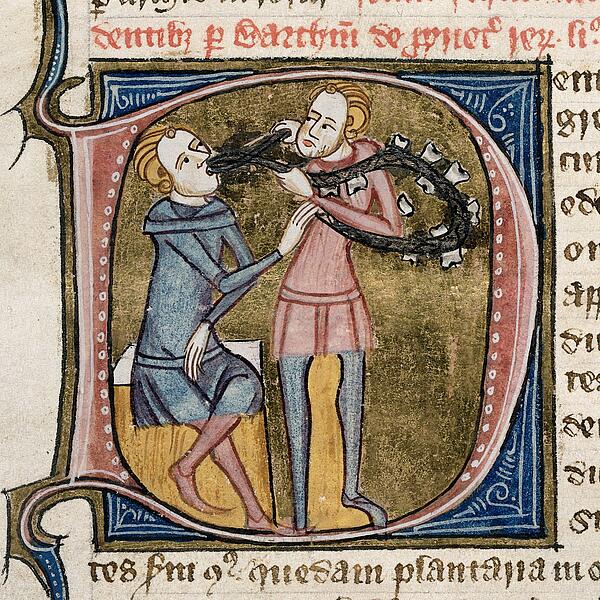Health and Medicine in Medieval England
Health and medicine in Medieval England was a daily concern for peasants and nobility alike. Towns, cities and even villages were incredibly dirty, sewage systems were non-existent and medicines were very basic or entirely ineffective.
For peasants in particular, disease and ailments were considered a normal part of day-to-day life, while the wealthy would regularly seek out the latest medicines created by reputable doctors. However, when the Black Death hit England in 1348, the non-discriminatory disease wiped out the poor and rich alike, killing more than two thirds of the country’s population by 1350.
The main reason the Black Death killed so many is that no one was aware of how germs and diseases spread, and people lived so closely together that it was impossible to prevent spread without any idea of the danger these living conditions posed.
Convinced only by the power of the church, peasants had been taught that illness was a punishment delivered by God as a result of sing, and as such, illness or disease could be avoided by behaving as the church dictated.
Away from the church, doctors were themselves lacking in knowledge. At this time, medicine was largely based around the theory that the body had four “humours”, or fluids, which would make you ill if they became unbalanced. As a result, any sickness would be blamed on this imbalance and treated as the doctor saw fit.
Physicians were considered among the most skilful people in medieval England, but unfortunately their work was based on a very poor knowledge of the human body. The main reason for this was that experiments and dissection on humans was banned during this time, which meant much of their theory was based on guess work. As such, medical cures were often bizarre and completely ineffective. However, they were still treated very well by royalty and nobility, who paid highly for the services of the best physicians in the land.

Physicians of medieval England would use their own theories and ideas to create their ‘cures’, which were adapted to suit the perceived condition of the patient. Should they possess a bad smell, they would concoct a mixture that would make the smell disappear. If they believed bad luck was involved, they would use prayers and superstitions to tackle the issue. When issues with the four humours were thought to be a problem, doctors would use a combination of bleeding, sweating and induced vomiting to restore balance.
Of course, in cases where the patient was lucky enough to recover, this was considered confirmation that one of the cures provided by the doctor had been effective, and this treatment would then be replicated elsewhere. However, in cases where the treatment was ineffective, the patient would often be blamed.
Operations in medieval England were carried out by the general public with other trades, such as butchers and barbers. Due to the lack of germ knowledge, these ‘surgeons’ would regularly complete operations with dirty tools. As a result, post-operative infections were very common and patients could die from even the smallest procedure. In cases where the patient required more advanced surgery, they would likely die on the table.
For those who were unable to afford doctors and operations, the only place they could seek medical attention was the cottage hospitals attached to the monasteries. The only place able to deliver basic medical advice to the poor, they were incredibly popular, and by 1200 there were hundreds around England.
Despite the vast array of people claiming to have medical knowledge, there were some widely accepted treatment plans for some of the more common issues, as described in the table below:
| Toothache | Doctors would hold a candle close to the tooth and use a cup of water to catch the worms that fall from the mouth. |
|---|---|
| Evil spirits | Surgeons would use trepanning, where they would cut a hole in the skull to release evil spirits. Areas of the brain believed to have been infected would also be removed. |
| Blood letting | Blood letting was used to rebalance humours. Leeches and knives were the most common tools, and would be used to drain blood from a specific part of the body. |
| Cauterisation | If a certain part of a patient's body was believed to be unwell, it could be cauterised with a hot poker. |
| General illness | The reliance on religion meant many people believed religion was the way to cure or prevent illness. It was common for sick people to pilgrimage to a holy site in search of health. |
MLA Citation/Reference
"Health and Medicine in Medieval England". HistoryLearning.com. 2025. Web.
